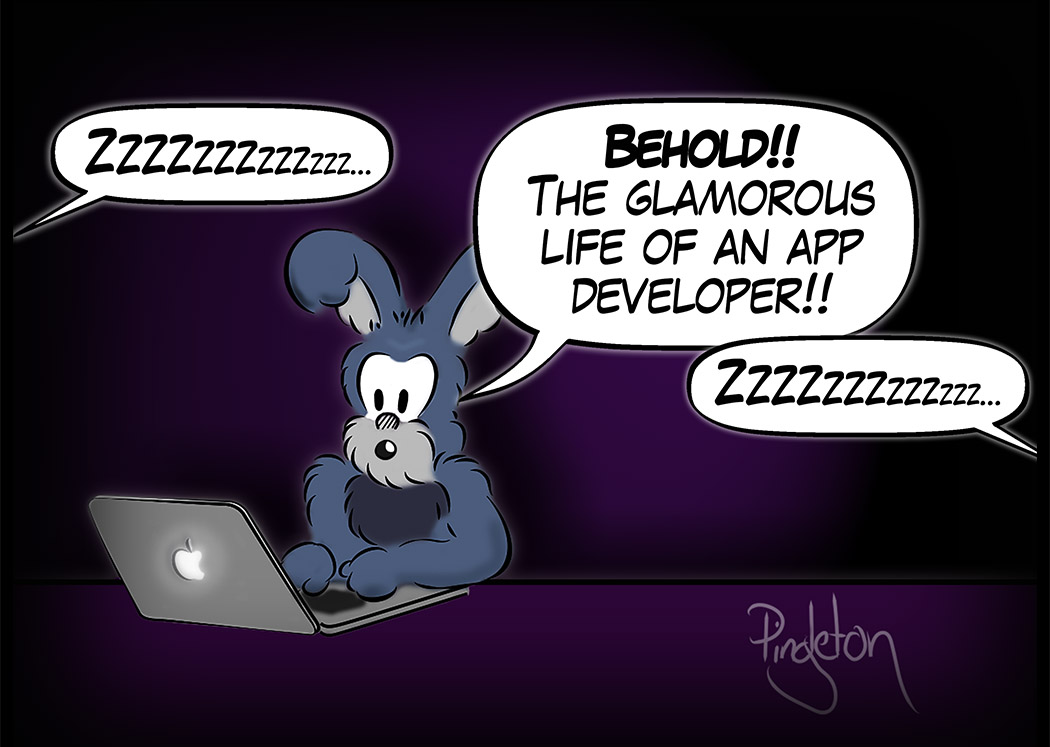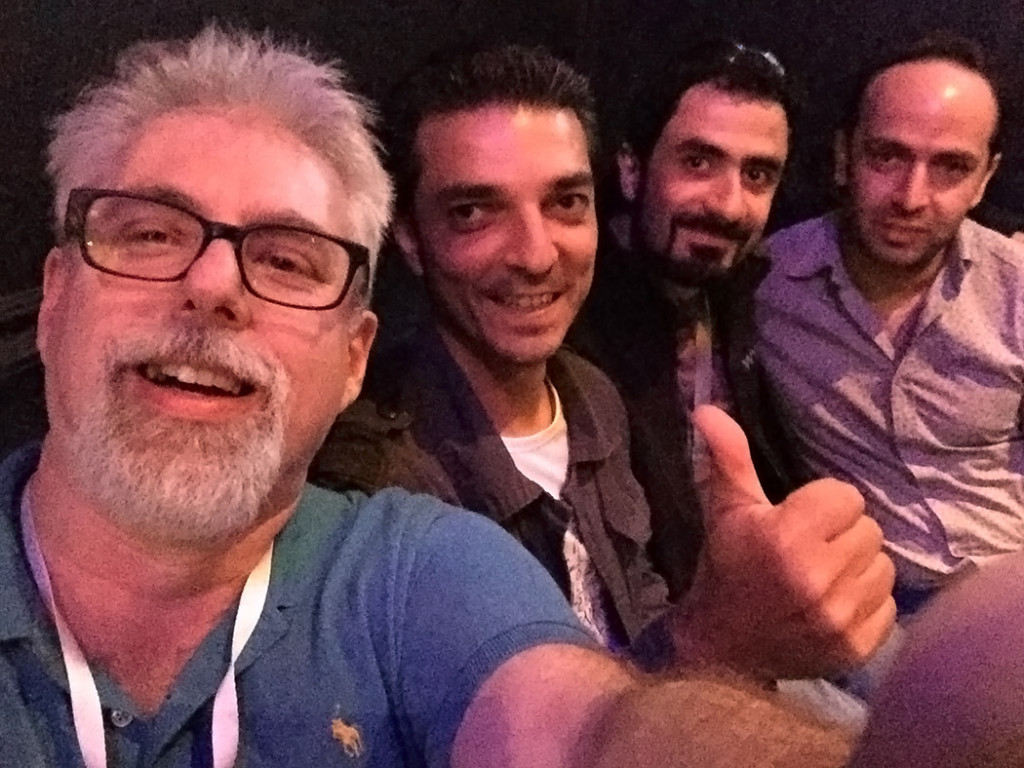This past week, our first tvOS game, Cthulhu Beat, was accepted to the Apple App Store. It’s been an amazing 10-week journey that has only affirmed the wisdom of our decision to go all-in and become iOS/watchOS/tvOS developers full-time. (Please take a moment and follow me on Twitter, won’t you?)
tvOS Early Days
The initial commit for our game was made September 23, 2015, just a few days after we received our Apple TV Developer Kit. At this point, information about tvOS programming consisted mainly of the official Apple documentation, and everyone was scouring the forums to affirm the methodology of working with the hardware.
It was an incredibly exciting time! I know it’s a geeky thing, but programmers live for new hardware to explore, especially sexy new hardware from Apple, and Apple’s decision to basically give us an Apple TV (for $1.07) was one of the happiest experiences of my life. I cannot express the fullness of my gratitude to Apple for this!
Gut Check Time
The initial commits were a series of failures. Because of the relative success of Cthulhu vs. Your Mom, we naturally tried to port it to the Apple TV, and we failed miserably.
Simply put, it was the wrong candidate for the Siri remote. In all we tried 4 different control schemes for the remote, and they all offered less than a perfect experience.
This is where many programmers fail. I’ve seen this many times. They have a title they want to translate to a new device so badly that they ignore the user experience and push through. More often than not they blame the controller. I wasn’t going to make that same mistake.
Program to the Strengths of the Device
I learned a few lessons from my short time programming with iOS and watchOS:
- Simplicity rules the App Store. If you want to make a game that appeals to the mass market, the controls have to be super easy. Tiny Wings is the epitome of this philosophy, as it requires only a single touch anywhere on the screen, but there are many other successful apps that are just as simple.
- Every device has ways that it needs to be interfaced with. Your game candidate must meet those needs. If it doesn’t, throw it away and find one that does. The biggest factor in creating a great game is being honest with yourself and throwing away something that doesn’t work.
If I was to stay true to these lessons, it was time to start from scratch, and that’s exactly what I did. Two weeks later I was back to square one. Thankfully I was able to identify the strengths of the Siri controller and quickly come up with a spin-off of Cthulhu vs. Your Mom that uses the same characters (from the Game Center achievements) in a different way.
A Funny Thing Happened on the Way To Release
Most games have music soundtracks. I consider some to be masterpieces. Classic Nintendo games like Super Mario Bros., Legend of Zelda, and even Donkey Kong Country, come immediately to mind.
As far as iOS titles, Cut the Rope and Shadowmatic are notable for their amazing soundtracks.
I had a chance meeting with the Shadowmatic team at the Pocket Gamer party in San Francisco this past summer while I was attending WWDC, and I got a chance to talk music with Elkony, the man who created the soundtrack.
It was incredibly inspiring, and at that point I was determined. Our next soundtrack had to be good.
One day, we realized that the half-second refresh rate between moves in our new game maps out to 120 beats per minute (BPM). We recognized a perfect marriage could be made between our game and a 120 BPM EDM soundtrack.
Music and Flow
Locking the music and gameplay together proved tricky, but the overall effect was greater than the sum of the two parts. The game now has synergy. More importantly, the game has emotion and flow!
At the Release Notes conference in Indianapolis this past October, Georgia Dow gave an excellent presentation on the concept of “flow” as pioneered by Mihály Csíkszentmihályi, what it is, and what it means to have it.
It was an amazing presentation but a topic for another day. The short description is that a game or app has flow when the user loses himself/herself in the experience.
It’s in the Wrist
As if our schedule wasn’t already insane enough, I finally acknowledged the night before Thanksgiving that physical gestures would truly enhance gameplay. I stayed up all that night and added support for gestures so that my family could help beta test the next day after the big meal.
Needless to say, this feature added even more to the game.
So to answer the question…
So to answer the question: why is it all or nothing when you’re an indie developer?
Simply put, there aren’t enough hours to meet the deadlines you need to meet while working full time for someone else.
The Bejopi cartoon at the top of the page sums it up. Being an Indie developer can be brutal. At one point I was working 21 hour days. I was so sleep deprived that it took me days to recover.
There are deadlines whether you recognize them or not. How so?
- The holiday season is huge for consumer sales.
- Getting in early on a market like the new Apple TV is also huge for sales.
- Being innovative early establishes you as a leader.
All of these things can make or break you. So if you’re truly serious about being an independent developer; if you have the skills, temperament, commitment, and work ethic to make it happen, it’s my opinion that you have no other choice but to leave your safe IT job behind and commit to pursuing it full time.

